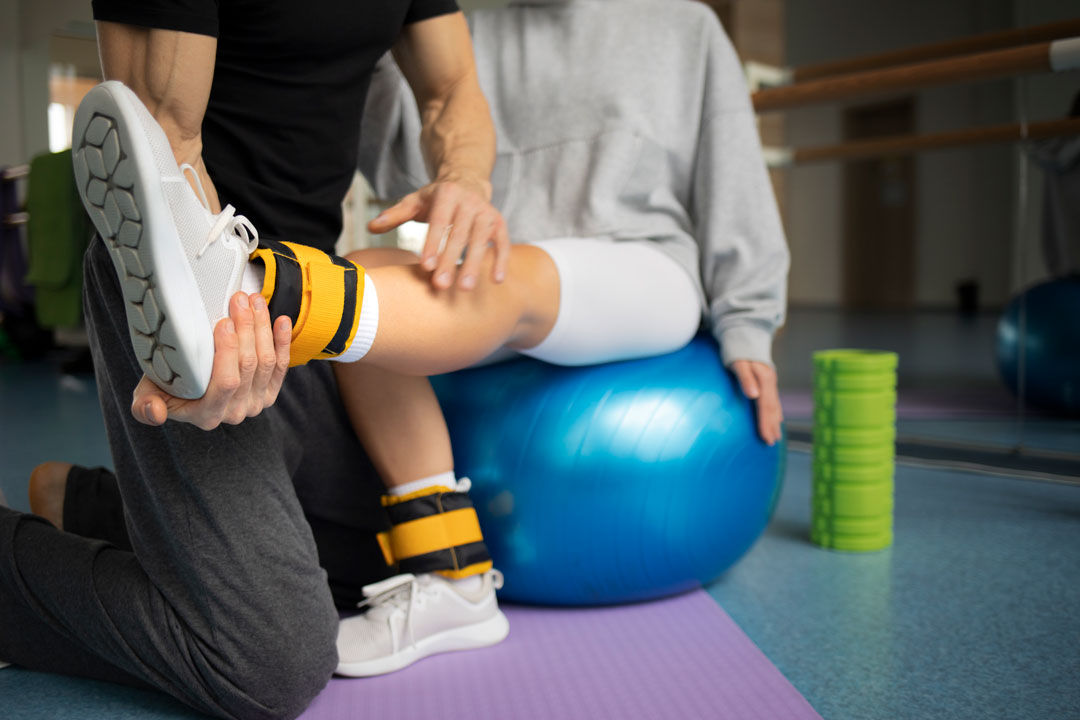Over my six years of practicing as a Doctor of Physical Therapy and certified Ortho-therapist, I’ve discovered 5 essential pillars for successful injury rehabilitation.
In my experience, patients who are dealing with an acute or chronic musculoskeletal injury must follow these pillars to achieve their wanted results. When a patient has internalized these 5 pillars, success and improvement becomes inevitable.
The 5 pillars are:
1. Vision:
You and your healthcare provider should have a goal at the beginning of the plan of care that will function as a roadmap to get you to where you want to be. This can include measures such as decreased pain, increased range of motion, and increased strength but, it can also be improvement in an activity limitation. The key to this first step is to be as specific as possible. I would suggest spending some time and writing down your ideal outcome on a piece of paper. Of course, every patient and injury are different and unique in their own ways, so speaking with your healthcare provider and working together as a team to come up with a strategic plan of care, is important. Your healthcare provider should give you as much information as possible about your injury and about realistic recovery time frames and outcomes, and you should register your condition before the injury, and your main goals regarding a physical therapy rehabilitation program. Ultimately, having a vision of where you want to be is the number one step in a successful rehabilitation plan. Like one of my mentors told me “If you take nothing else away from this, know that there is power in specificity and getting crystal clear on what you want in life”
2. Your Why:
What is your motivation? What is the reason you want to go through the rehabilitation process and get better? Is it that you want to play with your kids and be able to pick them up and run around in the yard without pain? Or do you want to get back to a certain sport or activity that you enjoy? Or is it that you just want to be able to work at your desk or drive your car without constant aches? Everyone’s Why will be different, and that is fine. What is important is to know your specific reason for motivation because obstacles will come up throughout your rehabilitation journey. You may be discouraged multiple times. Your strong Why will keep you focused and will keep you getting up for your treatment sessions and progressing.
3. Accessing the best tools and resources:
You could have a clear vision and a strong Why, but you still need to acquire access the right tools and resources that will help you rehab from an injury. A big reason why a lot of patients stay with lingering issues or pains for years, is that they choose to go at it alone, and as a result there is no consistency. They may get a massage occasionally, get a quick adjustment here and there, or foam roll once a week but not continuing because they don’t know if they are doing more harm than good. Ultimately, they are addressing symptoms and not the root cause of their issues. That is why its key for you to find a qualified healthcare professional that has a proven track record of achieving the optimal results that you want. It’s like finding a mentor or coach in a certain field you want to excel in and learning from their wisdom. Ideally, they will be able to use their experience to know what works and what doesn’t. Like I mentioned before, every patient and injury are different but aspects of rehabilitation “rhyme”. The key is when these treatments and exercises are coupled with the clinical reasoning and experience of your healthcare provider so they can tailor them to your specific needs. This leads to the best outcomes.
4. Take Massive Action:
Consistent daily action is the key to success when rehabbing an injury or chronic pain. Nothing will happen and you will not get to where you want to be without action. It doesn’t need to be a lot; it just needs to be consistent. Develop a daily habit of acting. It can be doing self-myofascial release techniques with a lacrosse ball whenever you have a break at work, or standing up and doing specific stretches your PT gave you when you feel tension and tightness, or having a committed strength building routine that you do every morning, noon, and night. Going to your weekly physical therapy sessions is very important, but if you don’t take an active role in your rehab at home it will become a difficult and slow process. In order to maintain the changes, you achieve in the clinic, you must implement the strategies your PT gives you to do at home consistently.
5. Measuring and fine tuning:
After you achieve a certain degree in the rehabilitation program, it is important to evaluate where we are. We need to measure and track the progress. In Physical Therapy we use outcome measures (tools used to assess a patient’s current status) to do this. Then we make minor adjustments to maximize the treatment and results. For you at home, you can keep a log where you can enter all the pertinent information such as reps and sets of all your exercises, your subjective pain scale (your pain on a scale of 1 to 10) during activities, and range of motion measurements of specific joints that you can get from your PT. Sometimes it is minor tweaks that can make the biggest difference in your home exercise program. Changing your angle on a technique or positioning yourself differently when performing a stretch, can make the technique more effective. Measuring and fine tuning is important in the clinic as well. For example, when your PT test and re-tests after using a specific treatment to see if there is a change in pain, mobility, or strength. Measuring and fine tuning throughout your rehabilitation journey will give you and your PT the ability to see exactly where you are, and if the plan of care is accomplishing what it is that you want. What gets measured gets managed.
In conclusion, the rehabilitation journey from a musculoskeletal injury is not an easy one. There will be many ups and downs and moments where you will doubt yourself but if you have a Vision, know your why, access the best tools and resources available to you, take massive action, and measure and fine tune your progress along the way you will be that much closer to your goals and you will achieve success.



